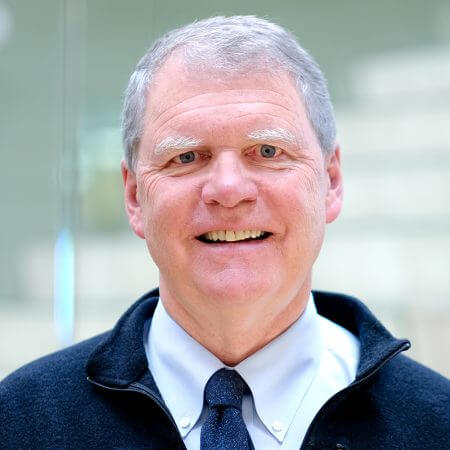
Helping Clients Face Today’s Markets
Thornburg Investment Income Builder Fund – 3rd Quarter Update
Operator:
Greetings and welcome to the Thornburg Investment Income Builder Fund Quarterly Update.
At this time, all participants are in a listen-only mode. A brief question-and-answer session will follow the formal presentation.
If anyone should require operator assistance during the conference, please press “*”, “0” on your telephone keypad.
As a reminder, this conference is being recorded.
It is now my pleasure to introduce your host, Michael Ordonez, Director of Client Portfolio Management for Thornburg.
Thank you, Mr. Ordonez. You may begin.
Michael Ordonez:
Thank you Shamali (PH), and welcome, everyone. Thank you for participating in this afternoon’s call. Hope you’re doing well. Another beautiful day here in Santa Fe, New Mexico.
Today, you’re going to be hearing from the Portfolio Management Team of the investment income builder strategy on recent performance, current positioning and our market outlook.
I’d like to remind you that today’s presentation, which slides can be found on our website, Thornburg.com/webcast—that’s Thornburg.com/webcast—may contain forward looking statements, which are based on management and current expectations and are subject to uncertainty and changes in circumstances.
The actual results may differ, materially, from these statements due to a variety of factors, including those described in our SEC filings.
I’d like to quickly introduce our speaker, today. We have all four portfolio managers from the Income Builder strategy: Brian McMahon, PM, Vice Chairman and Chief Investment Strategist; Matt Burdett, Portfolio Manager; Ben Kirby, Head of Investments; and Jason Brady, PM and our President and CEO.
One Housekeeping point I’d like to make, before we get started, you can ask a question three different ways, today. First, you can send us an email to questions@thornburg.com–that’s questions@thornburg.com.
Second, you can type those questions directly into your webcast. And lastly, we will pull the operator for those questions on the telephone line.
As we celebrate our 40th year in business at Thornburg, we’re fast approaching our 20th anniversary at the Investment Income Builder. So, it is my pleasure to pass it over to Brian McMahon. Brian.
Brian McMahon:
Okay, thank you, Michael, and thank you to everybody on the call, today. We will be working through a slide deck here of just under three dozen slides. I’ll take the early slides in the presentation and then Ben Kirby will take the others.
I will remind you, Jason is here, and Matt Burdett is also here on the line. So, hopefully, we get some questions going.
Let’s start with Slide #2. Just some key macroeconomic issues, at the moment. I won’t go over all of these. I will point out that the COVID-19 pandemic is still with us, most particularly in China, where the zero-tolerance policy continues. I think that will probably be phased out at some point, probably next year.
We all know that inflationary pressures persist. We got verification of that today, and inflation rates, really around the world, remain well above central bank targets.
That’s challenged consumption. It’s challenged real GDP growth. I note, just looking today, Atlanta Fed GDPNow estimate for this quarter is for real GDP growth of 2.89% in the U.S. And I’ll also note that the U.S. unemployment rate now officially is 3.5% with 4.2% in the fourth quarter of last year, when asset prices were much higher.
So, worry exceeds the observed reality on the ground, at the moment.
The other thing that I’ll note is that bond yields have increased a lot. U.S. treasury yields at September 30 of ’21 were 1.49% for the 10-year and now it’s 3.95%.
And for the Bloomberg U.S. Corporate High-Yield Index, high yields have risen from 4%, 4.0—4% at September 30 of ’21 to 9.68%, a year later.
So, the menu is really a lot more interesting from an income producers or an income seekers point of view.
I’ll remind you on Slide 3 that our mission hasn’t changed. We consistently seek to provide attractive income paying attractive yield, to date, grow the dividend over time, and we expect that if we are growing the dividend over time, that we’ll eventually get some capital appreciation, along with it.
And that’s been our experience. Our universe is really a global universe of dividend paying stocks, bonds and hybrid securities, and we remain focused, as ever, on the ability and willingness of the firms we invest in to pay good dividends and, hopefully, growing dividends.
Slide #4 just highlights our portfolio shifts, by sector. And maybe year-over-year, if I go from September of ’21 to September of ’22, the big shifts are an increase in energy. And some of that is performance and some of that is some additional names that we put into the portfolio and a decrease in communication services.
And that’s primarily the sale of China Mobile and China Telecom, which we did, early in the year, pursuant to regulatory fiat.
Slide #5 goes over the portfolio characteristics. And this I find very, very interesting. I’ve been doing this now, I’m in my 20th year of doing these calls and managing this fund. And I can’t think of any single quarter where the cheapness of the Thornburg Income Builder portfolio has been as striking as it is, today, with a trailing P/E of 8.7x, a forward PE of 7.3x.
I went back and looked at the third quarter, 2021, conference call. And at that time, our trailing one-year PE was 16.6x and the forward P/E estimate was 10.8x.
So, what’s happened? And that forward P/E estimate, we’ve more than lived up to, 10.8x a year ago, down to 8.7x, trailing. And some of that is performance and some of the stock prices have gone down.
But mostly, if the earnings have lived up to their billing. The other thing I’ll point out is a year ago, our portfolio, our equity portfolio dividend yield was 4.3%. And as you see, at September 30, 6.1% weighted average.
As far as the composition of the portfolio, it’s basically 80% stocks, 20% bonds. That’s the bond allocation’s up about 5%, year-over-year. So, we’ve been pushing that higher at a rate of a little over 1%, per quarter.
And as we sit here today, and I invite you to ask Jason questions, that will probably continue that trend.
Next Slide #6 just highlights our top 10 equity holdings, in order. Number 7 gets the second 10 and maybe what I invite you to focus on is that first column in the middle, just the year-to-date price change of these businesses.
And you see that most of them are down, most of them down double digit. And in many cases, that’s not because the businesses are performing, poorly. In fact, as we’ll get to in a minute, three quarters of our companies are raising their dividend this year versus what they paid, last year.
But they’ve just gotten cheaper. So, like bonds, stocks have gotten cheaper. The dividend yields in the far-right column on Slides #6 and #7 look pretty interesting for companies that have a record of generally increasing their dividends, gradually, over time.
You see the same thing on Slide 7, where some of these businesses, the stock prices are down in the 30s and 40s percent, year-to-date, in calendar 2022.
Just in the interest of completeness, Slide #8 has the remaining equity holdings. And that’s Thornburg Investment Income Builder portfolio, the 35 of them that aren’t named on the prior couple of slides.
And those are in order of the position size, and you’ll recognize many of those names.
The next 10 slides, starting with Slide #9, just give you some specific information on our top ten portfolio stocks. And I’d love to spend a bunch of time talking about all 10 of them, but I won’t. I will talk about a couple of them, however.
And maybe I’ll start with the first one, Total, which is a big international energy company, oil, gas and increasingly, green energy.
And if you look at that stock chart, you see that it’s been pretty volatile. It’s definitely down from its earlier year top, the market cap, at around 130 billion is really just over 2x this year’s EBITDA, which is supposed to be around 60 billion.
You see the dividend yield, which is just over 5%, before they paid a special dividend. And the special dividend is going to be €1 because the earnings have been so good, and they literally are almost approaching zero net debt.
So, they’re doing very well with their gas trading. It’s quite cheap. It hasn’t performed for a variety of, I’d say, technical reasons, but it’s not because the company isn’t performing financially, this year.
So, with the extra one-year-old dividend in the fourth quarter, that dividend yield should be around 8 for the year. So, for next year, we expect also to be pretty good.
Our telcos that are among the top ten, so, Orange, Vodacom, back in the second 10, you’d see Deutsche Telecom. They’re performing fine. These have been unspectacular businesses, all along. But importantly, these are businesses that have really more than 100 million mobile customers.
They don ‘t have to ship a box. The customers, the paying customer accounts are actually growing. The EBITDA is growing, gradually. And as these stocks have gotten cheaper, the dividend yields just get better and better.
We do expect Orange to earn about €3.5 billion of cash flow from operations, next year, which is a really nice number for a company with a 24.5 billion market cap. You can do the math in your head, but that cash flow yield is in the mid-teens.
So, we think they can continue to pay and even increase their dividend, given modest debt.
CME Group, why is that stock down so much, this year? Your guess is as good as mine because their trading volumes are up more than 20% in this year. And why are they up more than 20%? Because CME Group is where people go to hedge volatility and fixed income markets in equity markets, in metals markets, in energy markets and in foreign exchange markets, all of which are volatile.
So, traditionally, CME Group has paid a special dividend in the fourth quarter. There’s no guarantee that they do that, this year. However, we kind of hope they will and expect that they should, given good business conditions.
The final one that I’ll mention in our top ten is on Slide #16, and that’s Taiwan Semiconductor. And I mention Taiwan Semiconductor because they just reported earnings, today, for the September quarter.
And the earnings were very, very good. So, if you look at the descriptive paragraph on Slide 16, on the right, we note that, last year, revenue was up 18%, year-over-year. And we note at the bottom in the text box that they have a trailing 10-year compound annual growth rate of revenue of 14.6%, EBITDA-16.3%
This year, through nine months, revenue is now up 47%, year-over-year, and EBITDA is up 49%, year-over-year.
So, it’s very rare, in my experience, to see a stock that’s down 35%, when the revenue is up 47%, year-over-year and their EBITDA is up 49%, year-over-year, and they have zero net debt and they’re generally acknowledged to be a leader in their industry.
But that’s where we are, this year. And so, we feel pretty good about that earnings report. We’ll get a lot more earnings, over time.
And before I turn over to Ben, I’d just direct your attention to Slide #19, where we go through the percentage of companies that we expect by the weight in the portfolio, to grow their dividends, this year.
Seventy five percent—just remember back at the beginning of this year, we thought it would be 73%. So, we’re a little bit ahead on a portfolio weighted basis.
We do expect 7% of these companies to pay a flat dividend and about 18% to pay a lower dividend. And several of those payday special dividend, last year, that we don’t expect to be repeated, this year.
And with that, I will turn over to Ben to wrap up the presentation.
Ben Kirby:
Okay, thanks Brian. So, we’ll start off on Slide 20. So, Brian covered a lot of the ingredients of the portfolio, some of the underlying drivers, the individual stocks and some of the outcomes from a dividend growth perspective.
I want to talk about the outcomes at a higher level and talk about what the portfolio has delivered as a solution to clients, over a longer-term period.
So, on Page 20, this just shows that Income Builder has had a dividend yield, about 220 basis points higher than the aggregate Bond Index. So, higher yield.
But in the periods of rising rates of which there have been 32 periods that we’ve looked at in the portfolio’s history where bond yields rose by, at least, 40 basis points. Of those 32 periods, Income Builder tends to outperform whatever sort of index you want to look at.
So, whether that’s corporate bonds, aggregate bonds, high-yield bonds or even the blended benchmark, Income Builder has had both higher yields and better resilience to rising rates. And that’s been true this year, as well.
The next Slide 21 looks at the same data with just a bit more granularity. So, the previous slide talked about outperformance. This slide just looks at relative absolute performance. And you can see that, in many of the cases where bond yields rise, Income Builder has actually had a positive total return, not just outperforming but actually has had a positive return.
This year has not been the case, of course, as we’ll see on the next slide, Page 22. There’s been kind of nowhere to hide on a global basis across asset classes, outside of something like oil or Brazilian equities. Pretty much everything is down, and there’s been a tremendous amount of wealth destruction in the world, over the last nine months.
You can see major market indices down in the high 20s to low 30s percent and bonds also down in the double digits.
On the next slide, this just compares Income Builder performance, relative to the blended benchmark, which is 75% global stocks and 25% Barclays Aggregate Bond Index, over long periods. Income Builder has outperformed its blended benchmark, and that’s marketing it at a point where, of course, year-to-date returns are negative.
We’re down 18%, year-to-date. That compares favorably, of course, with equity returns which, as we said earlier, are down closer to 25% to 30% in much of the world but is slightly worse than the return of bonds, which are down in the mid-teens.
Page 24 shows quarterly returns of which we now have 79 quarterly returns, under our belt. We’re about to complete our 20th year for this portfolio. Of those 79 quarters, Income Builder has had a negative return in 19 of them and a positive return in 60 of the quarters.
So, overall, a portfolio that’s compounded nice rate and has not had tremendous volatility from a quarter-to-quarter standpoint.
Page 25 is another interesting chart. So, Brian mentioned that the bonds have sold off which, of course, means yields have gotten higher.
This chart tries to look at the percentage of Income Builder assets and cash and fixed income, as a percent of the overall portfolio, compared to high yield bond spreads, whether in the U.S. or in Europe.
This isn’t the only driver, of course, of our asset allocation, but this is indicative and interesting. You can see that our asset allocation has trended to be more fixed income, whenever bond yields are higher and less fixed income, whenever bond yields are lower.
So, I think it makes a lot of sense that whenever bonds are cheaper, all else equal, we do like bonds, more.
You can see a modest pickup in COVID. We had a fairly short buying window in 2020 where spreads widened, pretty quickly. We did take advantage of that, but it closed pretty quickly, as well.
We’re seeing it again, this year, where spreads are widening, and you see Income Builder fixed income and cash allocation increasing.
So, we’ve seen spreads increasing. We haven’t seen spreads totally blow out, yet. So, we’ve been increasing our allocation, slowly. Certainly, have more room to go, if we see more distress in the bond markets.
Next slide shows our quarterly distributions. We’re proud of our track record of paying quarterly distributions, since inception. Our all-time high dividend was paid last year at $1.2404. You can see that in 2022, we’re generally tracking a few cents per quarter less than we paid in 2021.
2021 had some special features to it, including some special dividends but also currency dynamics and organic growth in our company’s dividends that have not, necessarily, persisted in 2022.
But as bright highlighted, on an underlying basis, 75% of our holdings are increasing their dividend. We believe, over the next 12 months, being the portfolio is resilient and healthy, and we’re just coming a bit off the boil from the level of 2021.
Going to Slide 27, highlighting that Income Builder has had an attractive yield, since inception, a yield that’s been more than 4%, since inception and much of the time, quite a bit higher than that.
And not only has the yield been attractive but you’ve also had growth of the distribution, per share, at a 4.9% CAGR and of your net asset value of 3.9%.
So, you’ve had yield higher than global assets and you’ve had growth of dividends and growth of the NAV higher than inflation, over this time period.
So, again, talking about the portfolio as a solution for clients, we think that attractive yield and ability to grow it, over time, at a rate in excess of inflation in most years is a really attractive profile, historically, and especially today.
Going to the next slide, this is highlighting that solution for clients, over time. This is a hypothetical $100,000 investment, which is a graft from a net asset value, market value in the line, over time. And then, the vertical bars here represent every quarterly dividend we’ve paid, since inception.
You can see, over time, that distribution generally increasing, generally being a bit bigger in the fourth quarter and the net asset value, the market value generally increasing, over time, as well, even marketing it to market, today, where everything is down.
Just looking at some of the numbers, your initial $100,000 investment would have generated income of $161,000, over this almost 20-year period. And your capital appreciation would have been another $71,888, almost $72, 000.
So, over this time period, if you’ve taken your distributions in cash, you would have collected $161,000 and your principal would have gone up, which is again, a pretty attractive solution.
Going to the next slide, this is if you had chosen, hypothetically, with $100,000 to take your distributions and reinvest them. In that case, it would have been acquiring more and more shares, every year. And this has been a really powerful wealth creation vehicle when looked at from that perspective.
From that perspective, your $100,000 today would now be worth $483,000. So, tremendous wealth creation. If you decide to start taking those distributions in cash, if you had been reinvesting, you take them in cash, you can see that along the bottom of this chart, then you’d be getting about $27,000 in cash flow, per year, on your initial $100,000 investment.
We talked about the concept of yield bond cost. It’s a really powerful concept. Yield bond cost, in this case, would be close to 27%, which is a really interesting way, we think, to look at the power of dividends, the power of compounding income, over time.
The last chart for me, before I’ll open up to questions, is to just continue highlighting for all of our shareholders and supporters, the importance of dividends, over time.
Many times, investors overlook the power of current income in equities, as they focused on much more volatile share price movement.
This chart shows, going back to 1871, correcting the universe into 10-year periods, and you can see that, over time, dividends have accounted for about half of your total return. In periods where price appreciation is very high, dividends account for less.
So, you can see in the 2001 to 2010 period, dividends accounted for more than 100% of your total return because price appreciation was negative. And then from 2011 to 2020, dividends accounted for only 16%.
So, depending on your outlook for the next decade, if price returns are not as strong as they were in the 2010s, dividends can be expected to account for a higher percentage of your total return.
So, with that, I will pass it over to Michael to pull for questions.
Michael Ordonez:
Thank you, Ben. Operator, can we pull for questions? And then, we already have a bunch from the webcast that I’ll start off with, after you’re done.
Operator:
Sure, no problem. Therefore, we will conduct the question-and-answer session. If you would like to ask a question, please press “*”, “1” on your telephone keypad. A confirmation tone will indicate your line is in the question queue. You may press “*”, “2”, if you would like to remove your question from the queue. For participants using speaker equipment, it may be necessary to pick up your handset, before pressing the star keys.
And one moment, please, while we pull.
Michael Ordonez:
Perfect. And I will start off. We have a bunch from the webcast. So, let’s start off. Matt, maybe we’ll start with you.
The first one is on energy price volatility, due to the ongoing war in Ukraine. Has the market lost sight of longer-term decarbonization narrative that we’ve seen in recent years, or has this accelerated things? A practical example would be helpful.
Matt Burdett:
Sure, thanks for the question, Michael. Look, I think the crisis has definitely highlighted the need to diversify energy. That’s energy sources, that’s pretty obvious, actually speeding up the decarbonization process with more renewables. I think it’s too early to tell if there’s actual evidence of that. I think the signaling is that that’s going to happen.
There’s a couple examples I could point to. In Germany, they were able to approve some floating regasification terminals in a matter of weeks versus what would normally take probably years in Germany.
Now, a of that is simply because of the desperate need for gas, given the Russian flows had stopped.
You do see some areas in Germany where renewable permitting is being bypassed in what they call open areas. Basically, what this means is you can go through the approval process faster than you normally would but it’s not going to be approved, tomorrow. So, it still takes time.
And actually, probably surprising to some but as a result of the lack of gas, Germany has had to bring back coal. And so, coal is being used more, not only in Germany but in other parts of Europe and the world because of the gas price being so high.
So, in some ways, this is a bit of a reversal on decarbonization in the short term. But in the long term, you’re still going to have a long, long runway of renewable growth, as well as in everything that’s connected to that like electrical grids and the like.
So, longer-term, it’s still positive but it doesn’t happen, quickly. So, we have to just kind of be a little more patient, as this all comes through. And I’ll stop there.
Michael Ordonez:
Thanks, Matt. Jason, I’m going to come to you. There’s a fixed income question. Brian mentioned, Brian and Ben mentioned that our fixed income allocation is ticking up. This client notes that increase and asks, “Do you think there’s going to be more to do in fixed income, and do you expect rate and spread volatility to continue in 2023?”
Jason Brady:
Yes and yes. There’s going to be more to do, partly because of that volatility. And as long-time listeners will note, we tend to have you up in fixed income, not just when prices are lower but when volatility is higher, the fixed income market, especially credit markets where this portfolio tends to play and it’s facing allocations.
Loses liquidity and loses its weight, from time to time. We actually have not, as both Brian and Ben noted, seen cracks in those markets to any huge degree.
But we have sort of took to increase the allocation, not so much because liquidity is poor but actually its value is pretty good.
Any time–I’ll note that about a year and a quarter ago, the yield on high-yield was about 3.5%. Now, it’s approaching 10. I have sort of longtime high yield participants tell me, yeah, I don’t really like high-yield but it’s below double digits and it hasn’t been above double digits in coming on a decade, plus.
So, that’s a really big change.
Other than its value, I think that means it’s value, in some places. Does that mean its value in all places? No. Does that mean it can’t go lower? Absolutely not. I would expect it to do that, somewhat.
Spreads in the mid-500s for that are okay. Where we’ve been adding is kind of, I keep using this joke, but I think it’s a good one. The cream of the crop, which is to say kind of high-quality, high-yield, places where our credit work leads us and where we expect to fall to remain relatively low, this is not a market timing, but this is a long-term hold for something that adds a lot of long-term income for our shareholders, which is typically how we approach this.
So, yeah, I expect volatility to continue. CPI printed today was an example of things that continue to grow upon markets. The Fed’s terminal rates pressing in the upper portion of 45, right now. That could go a little bit higher, maybe to 5.
The reality is, we’re going to continue to sort of see the beatings continue until morale improves. But that means that we’re uncovering value, frankly, across this portfolio but certainly in fixed income.
Michael Ordonez:
Maybe I’ll tie with Jason’s comments on the rate path, Brian. But how does that, we have a question, how does that affect our financial holdings, that increase in the hawkish pass for policy rates?
Brian McMahon:
Well, it’s, I’d say overall, favorable. As long as rates don’t go so high that they cause a serious recession. And I don’t think we’re at that level, at the moment, as kind of real-time indicators go.
But let me give you a couple examples. I mentioned Chicago Mercantile Exchange. So, if people think rates aren’t going to be volatile, then nobody feels the need to hedge. So, business is kind of crummy and demarked.
But if people think rates are very volatile and there’s a lot of debt out there and deficits are large and that sets off volatility and all financial assets, and by the way, also in commodities, then that’s a good thing.
And with respect to, it’s a good thing for their business. So, and their incremental cost of doing another unit of trade is close to zero. So, I would say it’s for that, which is one of our largest financial holdings, unambiguously good.
For the banks, it’s a little more complicated. But basically, banks have traditionally talked about deposit endowments. Banks don’t have to pay cutting edge market rates on their entire deposit base. And I think what we’re going to see, starting tomorrow with bank earnings announcements, is net interest margins expanding and net interest income expanding from the U.S. banks but, frankly, also from many banks, outside the U.S.
And it’s simply because they won’t pass along the full increase. So many banks have huge deposits with the Fed. And if you think, for the last several years, a bank deposit at the Fed has earned a few basis points, and now it’s more than 3%.
And if you have a bank account, you know that the bank is not passing that all along to you. They’re keeping a bunch of it.
So, as long as we don’t see loan losses climb to intolerable levels, I think it’s quite good for bank earnings and also, I expect for bank dividends that interest rates have climbed, over the last, really, six months.
Michael Ordonez:
Thanks, Brian. I’ll stick with you, here, because we’ve gotten a bunch of questions on Taiwan Semi. And it seems to all revolve—the questions all seem to revolve around the geopolitical landscape between China, the U.S. and Taiwan and what concern that brings to a large position in the portfolio.
Brian McMahon:
Yeah, well, it always brings a concern. But the simple fact of the matter is, if you have an iPhone, it’s got a Taiwan semiconductor chip in it or, frankly, any kind of a cutting-edge laptop. Or if you use the Internet, the server farm that you’re connecting through probably has a preponderance of chips from Taiwan Semiconductor because they’re kind of the leading manufacturer in so many nodes.
And as we point out on our descriptive slide, with respect to this company, they do business with so many companies, around the world.
There’s always the possibility that communist China could invade Taiwan and, somehow, blow up China’s semiconductor’s business.
I’d say that’s a remote possibility. I don’t know how that would be productive for China. And I think the events in Ukraine probably are putting in stark release that it’s not necessarily good business to invade your neighbor, when your neighbor isn’t doing anything wrong.
But the reason why our portfolio position in Taiwan Semi isn’t larger than it is, is that we do diversify the portfolio. And in fact, if I look back over the last two years, we’ve sold some shares, up in the 500s and 600s, frankly, at today’s price at around 400 and even a little below, last night.
I’d be a better buyer than a seller of Taiwan Semi, just because, as I said, it’s where for me to see a stock that’s down 35% when the revenue and EBITDA are up more than 40%, and there’s no real concern about debt.
And it’s really the first stop for any device manufacturer that wants to make chips. And most device manufacturers don’t make their own chips, they outsource it.
Michael Ordonez:
Yeah, you mentioned that, Brian, on the prepared remarks, and I urge everybody to download the presentation and spend some time with the ingredients.
Ben, I’ll come to you for this one. Are there any currency headwinds?
Ben Kirby:
Yeah, thanks for the question. So, I’ll answer it maybe two ways. One is from a totally term perspective. And in that case, there are headwinds, but we’ve offset much of those headwinds with a currency hedge.
So of course, the dollar is very strong, right now. The dollar is strong versus just about every international currency because Income Builder has a lot of exposure to international companies, dividends being higher outside the U.S. than they are in the U.S., that would tend to have an international SKU, within a global portfolio.
So, from that sense, yes, having exposure to companies domiciles outside the U.S. has been a headwind, from a currency standpoint.
But we have had significant portion of that currency exposure hedged. So, that’s helped to offset a lot of the headwinds.
The other way I’d answer it is from an income perspective. And on that perspective, we don’t hedge the income from foreign currencies. So, whenever a company pays a dividend in euros and the euro buys fewer dollars and we translate it back into dollars, then that is a headwind for our U.S. dollar dividends.
So, that is certainly an issue to the extent that we continue to be paid dividends from international companies. It’s probably as much of an issue looking into next year, just because much of the currency depreciation has happened in the last six months, and European companies tend to pay a lot of their dividends in the first quarter.
So, I think we’ll be watching pretty closely what the currency does, over the next six months because that’s when we expect to get a lot of the income from outside the U.S.
Michael Ordonez:
Thanks, Ben. Matt, I’m going to go to you for this one. The client notices that it’s not a large position but the UK crisis with bonds, how is that going to impact legal, in general?
Ben Kirby:
Sure, thanks for the question. Yeah, look, I think what’s going on in the UK is a good example of probably what most would call disorderly moods in the UK bond market.
Obviously, inflation has been high, there. It’s been more challenged because of the energy crisis. And then on top of that, you have a new government that came out with some unmaterial, unfunded tax cuts. And so, that kind of sent the market, I think, into a bit of a tizzy.
So, with respect to legal in general, so, they are involved as an LDI provider, so a liability driven investment service, which is basically helping pension schemes manage their assets to meet the liabilities that are to be paid, over many years into the future.
Legal, in general, does not have those assets on the balance sheet. So, the news of margin calls that we’ve been reading about and that have been happening is these are not margin calls on legal in general’s balance sheet; they’re margin calls on the schemes, the pension schemes.
So, from—and we can get into more details, if someone asks a follow up. But from a legal and general perspective, it’s the turmoil going on is going to—it’s a reputational risk, potentially, for them, given they are an LDI provider.
And they have an asset management business. So, as UK assets go down, really global assets go down, that means less revenue from the feeds generated on the assets.
And then the other consideration is the credit portfolio. They have a large bond portfolio, across various businesses. So, in times of turmoil like this credit risk, is something that people get concerned about.
In their last update, they highlighted 99% of the portfolio being investment grade. The actual default rates that their portfolios have experienced from 2007 through the first half of ’22 was less than one basis point.
And then the times that we have been following the company, the fears are usually much greater than the actual impacts to their business. So, we feel okay, given the valuation where the company is, now.
But again, it is a small position. But that’s kind of the big picture, there.
Michael Ordonez:
Thanks, Matt. Brian, you mentioned a little bit about it. But what are you looking out of third quarter earnings that are ticking off the next few days, here?
Brian McMahon:
We’ll have to see. But I think that slide that we showed earlier, which is if you want to look on a portfolio basis, it’s Slide #5 in the deck, that compares one year P/E to backwards to forwards would indicate double-digit expected earnings growth for the portfolio, as a whole, looking one year ahead versus looking one year behind.
That’s probably optimistic. I hope it’s not. And I wouldn’t count on that. But on the other hand, I don’t think it’s so optimistic that we’re going to see the portfolio earnings go into some kind of tailspin and be hugely negative that would cause the P/E of the portfolio at the present price to go way up into the double digits.
So, I wouldn’t want to get to fixated on one quarter. But I think it’s probably okay to think in terms of four quarters. And I feel pretty optimistic that, even with higher interest rates and even with some kind of an economic slowdown, that the Income Builder portfolio is pretty resilient and is low priced.
And so, I expect our dividends to hold up pretty well. And that will be because I expect earnings to hold up pretty well.
Michael Ordonez:
Perfect. Thanks, Brian. As we get closer to time here, Operator, do you have any calls? Do you have any questions on the phone line? If not, I have a few more here.
Operator:
No, there are no questions over the phones.
Michael Ordonez:
Perfect. Let’s turn it to Jason. We’ve touched a little bit about rates and, obviously, we see today inflation still running quite hot.
Jason, what’s your view on the Fed and the path that they’re going to take, through the end of this year and the beginning of next year?
Jason Brady:
Yeah, I think that from a market perspective, anyway, we’re in a cycle of markets, typically risk markets, both in credit spreads and in equity sort of seizing on the desire for the Fed to lighten up a little bit.
It’s pretty clear from inflation prints, that’s not going to happen, that today anyway was overarchingly negative sentiment that that probably causes non spec.
But I would look for the Fed to take its–put up a brake. And just put some numbers that this CPI print is pretty much something five basis points.
We’ll see what we get in December. I think from a normative statement standpoint, as we get closer to kind of mid 4s, even into 5%, that funds, the Fed really does need to see what they’re doing vis a vis how those long and bearable assets might work.
The minutes yesterday showed that they are, in fact, considering that. So 50 basis points, even with this trend, is still on the table for December.
Ultimately, maybe something can refocus investors’ attention on and something that I think everyone lives inside of because there isn’t a headline that reads a few months and a half, or so, and that’s the quantitative typing.
We’ve already seen quantitative typing be reversed by the DOE, at least temporarily, or the decision to do that anyway temporarily by the DEO.
The Fed is really undertaking maybe a more ambitious program. Today, the treasury market’s operating just fine. But we’ve seen a number of times in the treasury market, even in the last few years, that where it’s really come unglued.
So, that’s something I’m really watching. It has raised volatility and really even over about stock volatility in these relative markets but nothing that the Fed used as significant, as of yet.
So, Fed’s still on the job. I think cash carry (PH) was, of all people, forgiveness sake was half of his bash after the minutes released to reiterate a very hawkish stance and either continue to get better language out of the Fed, especially given these very embarrassing prints.
I do think we are sort of peaking in CPI. I think there’s certain evidence that the medium term will see less aggressive rates, especially meet price rises. But the pathway down to 2% is a very long one.
Michael Ordonez:
Thanks, Jason. Two last questions. Quickly, Brian, for you. Ben, let’s go to you first. Are you expecting to pay capital gains tax in 2022?
Ben Kirby:
Thanks. No, we’re not. And actually, it’s one of the strengths of Income Builder, over time. It’s been a very tax efficient compound of wealth vehicle.
In fact, we actually have tax losses in the portfolio to the tune of several hundred million dollars. So, you don’t have to worry about a taxable gain being distributed, this year.
Michael Ordonez:
Thanks, Ben. And then, Brian, maybe the last one goes to you. As we continue to see elevated inflation, rates continue to rise, we have seen performance correlation between bond and equity bonds. And equities, certainly, highly correlated.
How does that—how do you view that going into next year?
Brian McMahon:
Well, I think bonds have kind of led the way with higher yields. So, I mentioned a couple of numbers, but I’ll mention again, just looking at that high yield bond index going from 4% to almost 10% in the 12-month period.
So, those kind of BAA, BBB bonds are considered by many to be equity surrogates. And the menu sure looks a lot more interesting with bond yields, corporate bond yields in the high single digits than at 3% or 4%. And so, that’s gone up, a lot.
Multiples have come down, a lot. And I talked a bit about how the multiples in our portfolio have come down, year-over-year, despite glowing earnings.
But maybe my key point is I actually think they’ll be somewhat correlated but somewhat correlated in that investors will probably be happier a year from now, if they own some stocks and bonds, today, than they have been over the last year because values are so much better than they were.
So, I suppose some correlation will continue. The possible difference would be if there is a huge recession bordering on depression, in which case you’d want to have the safety of treasury bonds and maybe even long duration treasury bonds.
But that’s not my base case forecast for the moment.
Michael Ordonez:
Well, thank you. Thanks, Brian. And thanks, everyone, for making this call as dynamic and interesting as it could be with all of your questions.
Hopefully, you’ve taken away with both the prepared remarks and the Q&A just how constructive we remain on the prospects for the strategy, the types of companies we own and the type of income that we generate.
December of this year marks, as I said, the 20th anniversary of the Income Builder’s strategy, and we look forward to doing some unique pieces of collateral and, certainly, we will be heavily reaching out to both celebrate the past 20 years, as well as think about the next.
So, please stay tuned, and we look forward to talking to you, soon.
Operator, that’s it. Thank you very much.
Operator:
And this concludes today’s teleconference. You may disconnect your line at this time. Thank you for your participation.
When searching for income, investors tend to focus solely on current yield, which has some limitations. TIBIX seeks to provide an attractive yield today, but also aims to increase the cash dividend to investors over time.
Hear the portfolio managers of Thornburg Investment Income Builder Fund share their thoughts about income opportunities during a review of past performance, current positioning, and market outlook.
Download the webcast presentation here.
Visit the Thornburg Investment Income Builder Fund page here.
More Insights

Investing in Turkey? Opportunities Exist Among All the Challenges

Will Closing the Korea Discount Create Investment Opportunities?

Why Is There a Korea Discount?

The ABCs of Personal Finance

How to Position Bond Portfolios as the Fed Ponders a Pivot





